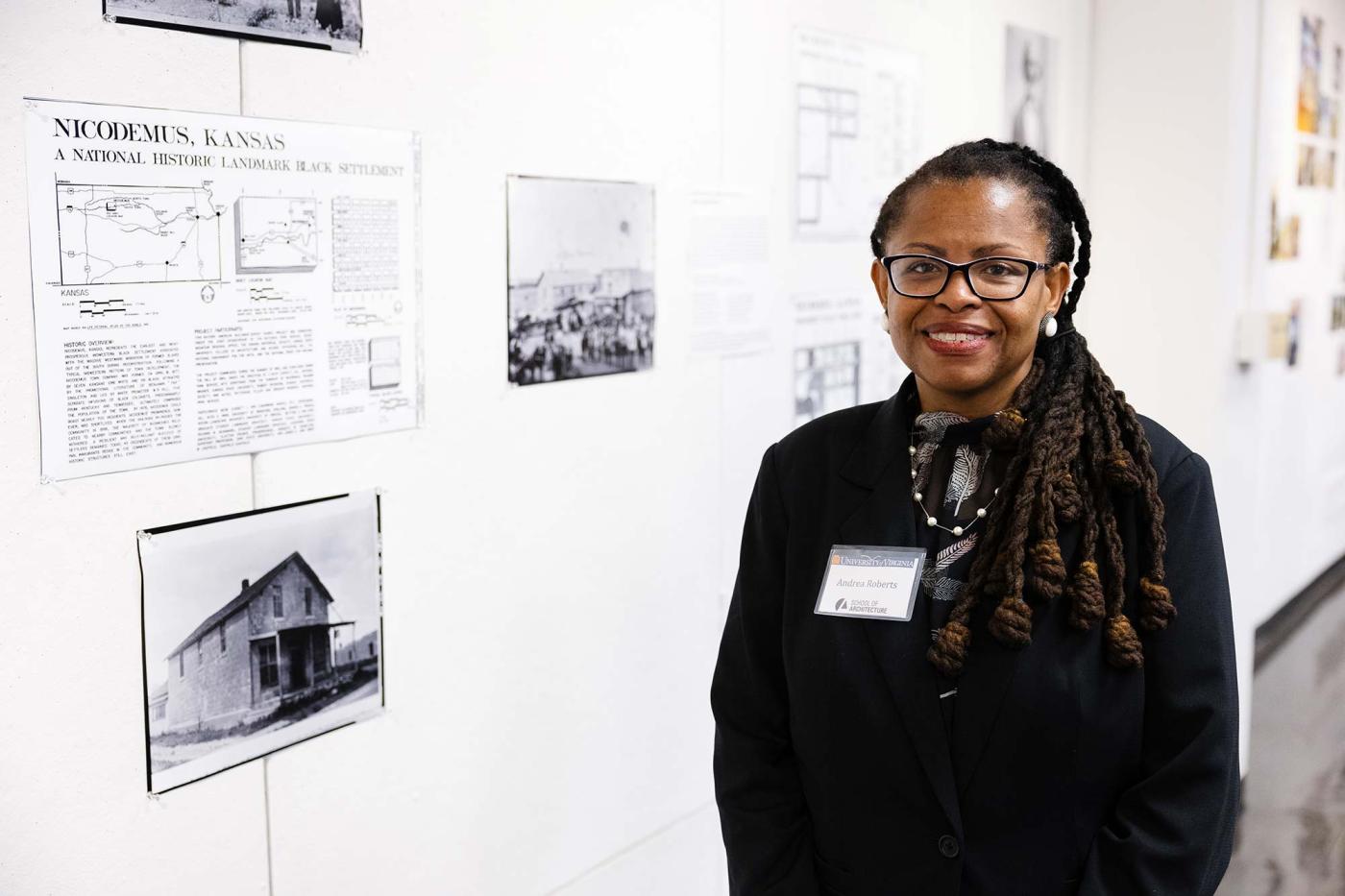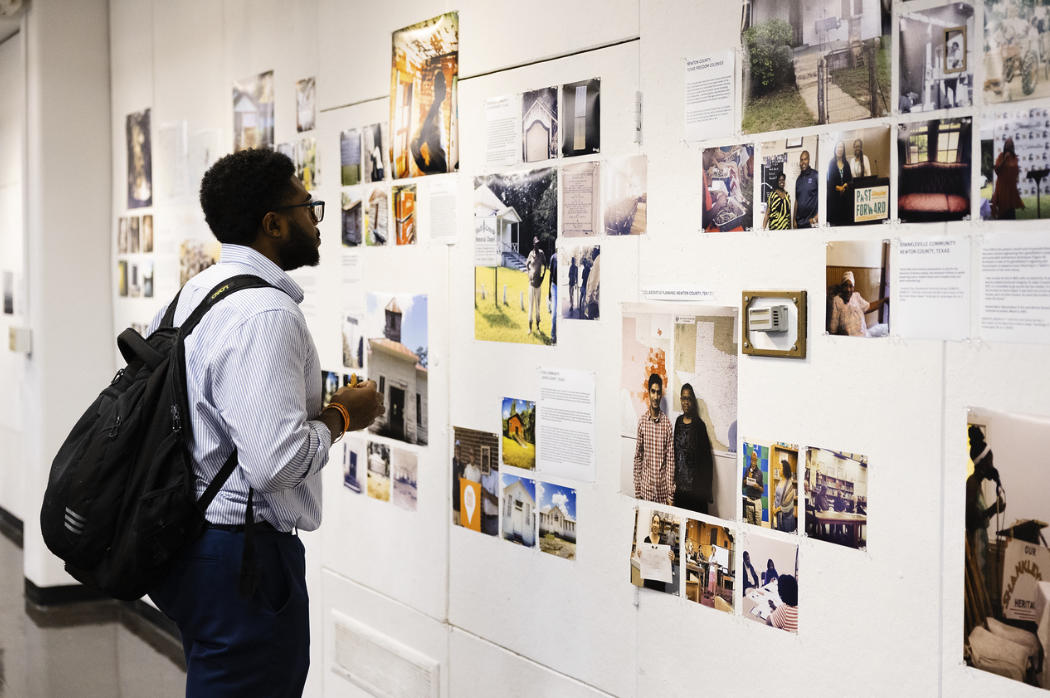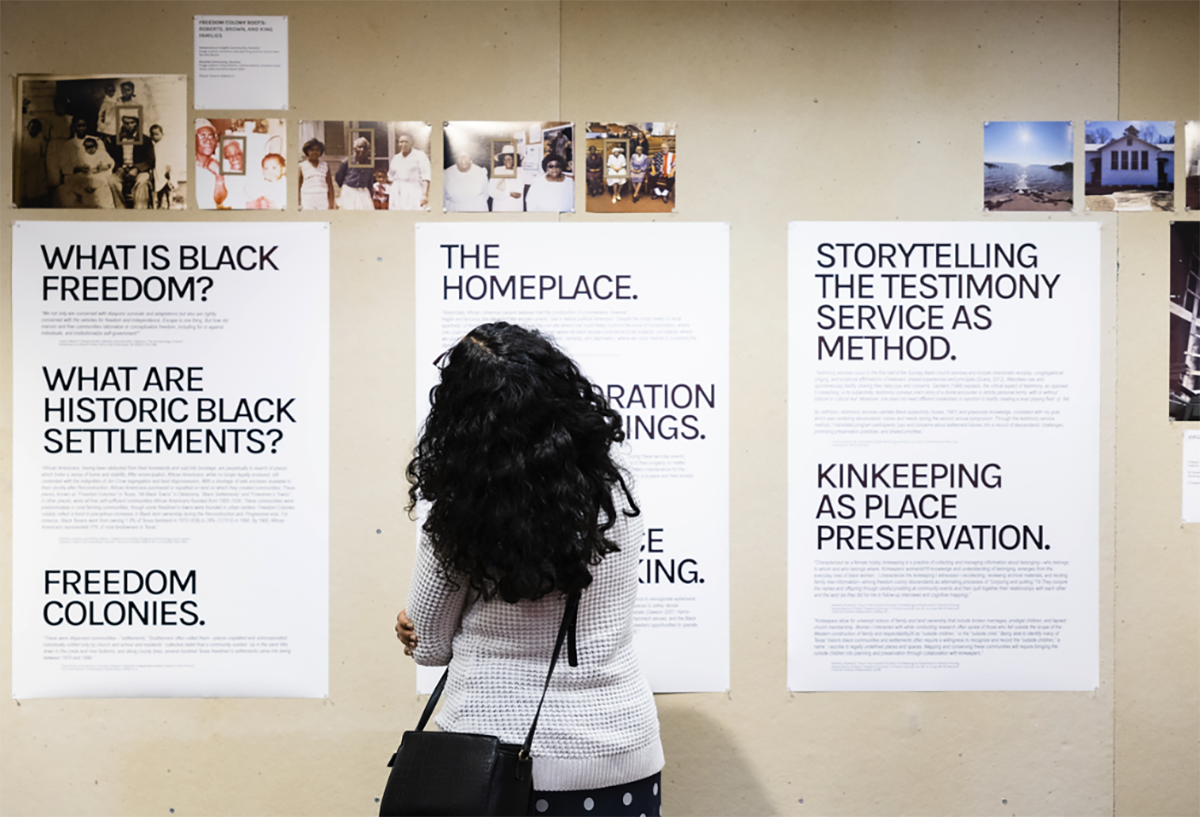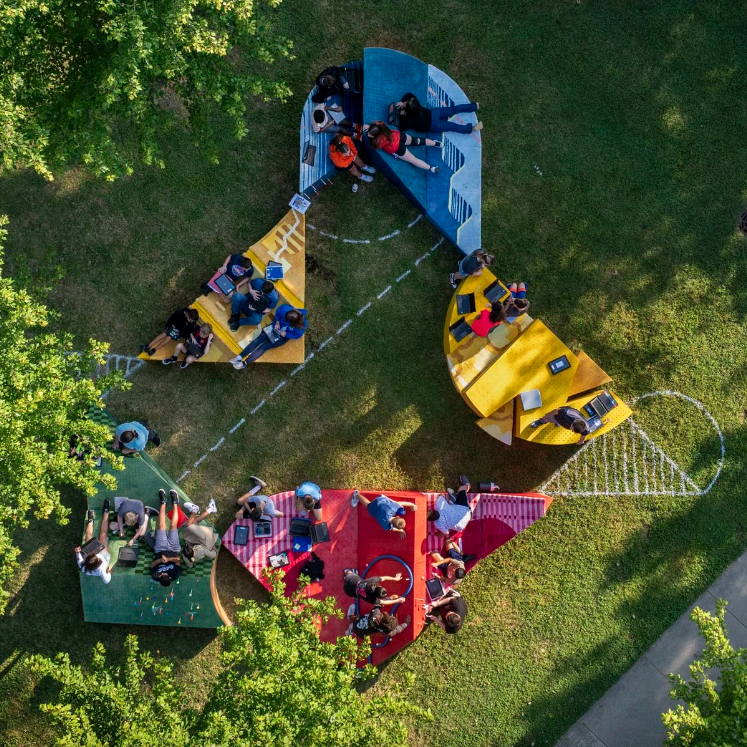
THE CENTER FOR CULTURAL LANDSCAPES'S NEW FACULTY DIRECTOR ANDREA ROBERTS IN CONVERSATION WITH THE NATIONAL TRUST FOR HISTORIC PRESERVATION
The National Trust for Historic Preservation (NTHP) recently featured Dr. Andrea Roberts, new faculty director for the UVA School of Architecture's Center for Cultural Landscapes. In a Q+A with the NTHP's Priya Chhaya and Rhonda Sincavage, Roberts shares her vision for the research center and her ongoing work on placekeeping and preservation.

RECONSIDERING PRESERVATION WITH ANDREA ROBERTS AT THE CENTER FOR CULTURAL LANDSCAPES
September 27, 2023 By: Priya Chhaya (Associate Director of Content) and Rhonda Sincavage (Director of Education)
Since 2014, Andrea Roberts has worked tirelessly to preserve cultural landscapes and create public and peer reviewed scholarship. She embraces a way of thinking about the evolution of place not only as a static institutions, but as a collection of spaces that are shaped by social, economic, and cultural forces.
This fall Roberts embarked on a new chapter as the faculty director, with co-director Associate Professor Jessica Sewell, of the University of Virginia's Center for Cultural Landscapes (CCL), which will serve as an umbrella under which she will continue and expand her work, including the Texas Freedom Colonies Project (TXFC). Associate Professor Roberts is also faculty in the Department of Urban and Environmental Planning.
For historic preservation, this is a glimpse into what Roberts hopes is the future of the field, where preserving cultural landscapes is synonymous with placemaking and placekeeping. These two ideas are defined as creating public spaces that build connections between people and places (placemaking), while also stepping back so the communities can take the lead in the care of these sites based on what they need (placekeeping). Together these three concepts form the foundation of a more inclusive and equitable preservation practice.
We spoke to Roberts directly about her new role, how it relates to the future of TXFC, and what she sees is the path to transform the work to save places.
As the newest faculty director, can you tell us about the future vision for the Center for Cultural Landscapes (CCL)? How does that impact the way you practice preservation?
The new vision of the CCL is to center service, justice, and possibility—all in ways that continue to shape landscape history but emphasize its utility to people on the ground in the present, particularly those considered traditionally outside the academy or professional preservation.
Service causes us to think not just about what is intriguing or interesting, but to go where we as academics are needed and invited. And in all our efforts, prioritize belonging and “Do No Harm.”
Justice forces us to move past guilt to accountability, redress, and transformations in the relationship between people, institutions, and landscapes.
And possibility allows us to venture into speculative landscapes and futurisms.
Preservation and planning have a reputation for harm to underrepresented groups, and that legacy continues even among the well-meaning and benevolent among us. Yet we are able to shift this by modeling a reflective practice that prioritizes listening and learning from those within and without the academy.
By understanding cultural landscapes as deeply connected to people, we also want to change the field of preservation, rooting it in the humanities, rather than just focusing on technology or policy.

How do we ensure that the voice of communities are recognized in preservation work? How do we, as preservationists, have authentic conversations?
The concept of “Outsider Preservation,” in which every connotation of the outside is engaged, encourages us to revise our thinking around what is valid preservation practice, which places are valid ones to preserve, and who gets to call themselves a preservation practitioner. I have been doing this work in the context of freedom colonies, and scholars at UVA have been grappling with power-sharing and the appropriate role of the university in preservation.
There's a great movement afoot around growing the capacity of descendants of enslaved labor, descendants of slavery, descendants of the founders of Historic Black settlements, and to bring more attention to what is owed to these communities and the support they need. However, not enough attention has been brought to the innovations that they bring to the fore such as mutual aid in cooperative approaches to cemetery preservation, for example, their effective ways of leveraging and pulling skills together, the ways they mobilize their descendants to come together around projects or plans.
I want to elevate this space of struggle and possibility in our programming and the capacity-building-oriented work we can do as researchers. At UVA, the Equity Center and the ongoing collaboration with the nonprofit, The Descendants of Enslaved Communities, are modeling this approach. By transforming the commemorative landscape on campus, UVA has advanced the conversation on power, accountability, and redress. I anticipate seeking funding to support the ways we think about the commemorative landscape in ways that encompass descendent-led planning and cultural traditions associated with communities of color.
Also, part of Outsider Preservation is growing a new community of practice that breaks down some of those barriers around certification and discipline to leverage all of it to save some of our most endangered tangible and intangible heritage.

You've mentioned that your work at the CCL is the natural progression of your work in Texas with the Texas Freedom Colonies project. What are some of your hopes to expand the impact around that work?
The work around the Texas Freedom Colonies Project yielded something that I call a place preservation framework, which is about looking at how academic interventions are ones in which you create opportunities for students while also building capacity to address the needs of communities as defined by that community. It wasn't just, “let's identify a place and tell its story”, but let's identify a place as a contemporary entity with real current needs around historic preservation—and that they have the full capacity to define themselves, and then invite in universities to engage around those needs.
Learning from Texas, I am bringing this model—that feeds back into empowering communities in a sustainable way—through partnerships and joining up with some efforts underway in Virginia.
We are also looking at a diasporic approach. We want a meaningful grounded approach, which includes taking what we've learned from the Texas Freedom Colonies project, and its online atlas to map and identify past and current connections to other places. These connections are part of the diaspora, when after the 1940s a mass exodus of African Americans in Texas went to the west to places like California and Seattle, and some to the Midwest (such as Detroit).
For example, we held an event this month where we showcased individuals from Nicodemus, Kansas, and Allensworth, California from the west to challenge and explore the new frontiers in Black placemaking. What's unique about the conversation is not just that we are uniting descendant communities from the west and the east, but that we are starting to think about the ways that environmental justice issues like water access and quality in Allensworth and the way that the reparations movement in California is influencing the ways people are thinking about Historic Preservation while also trying to tell the full story of places like Nicodemus, Kansas and Blackdom, New Mexico.
We're trying to think about the history, the present and the future of Black placemaking, and the possibility in elevating justice and the humanities, all at the same time.


